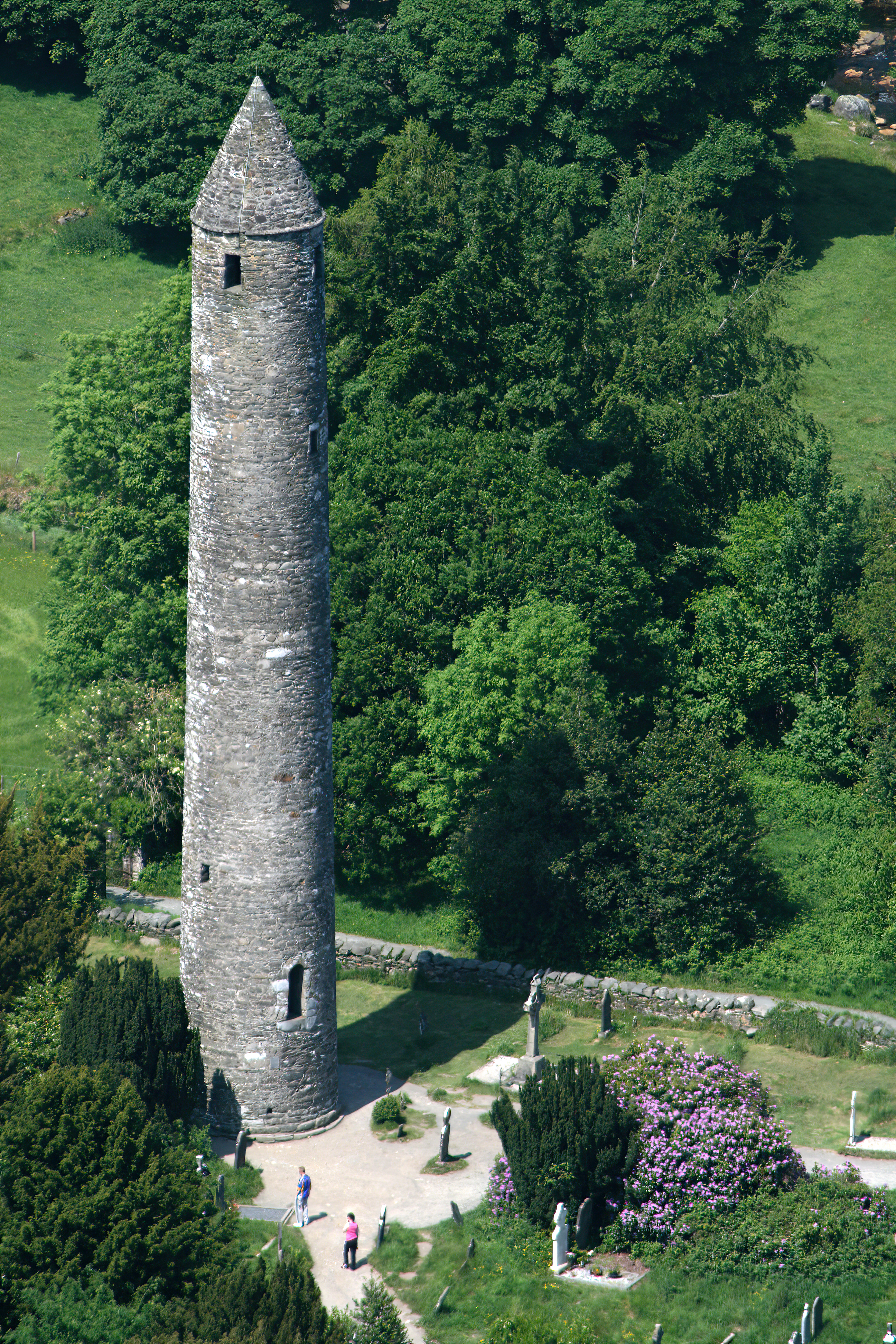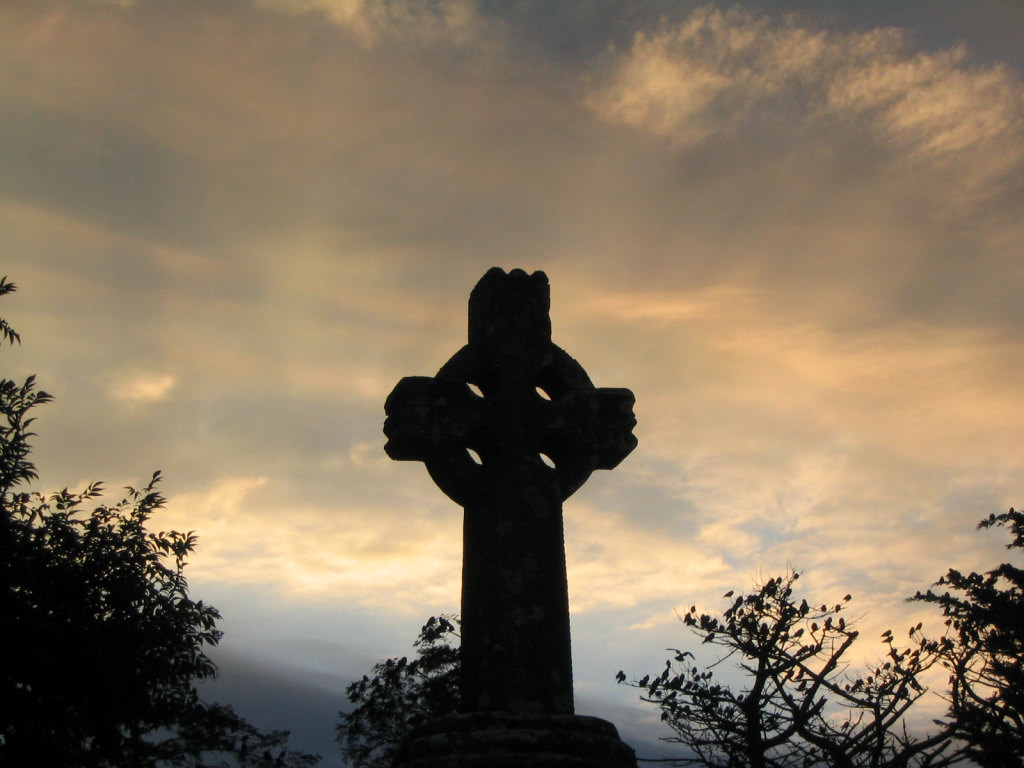|
Taghadoe
Taghadoe in County Kildare in Ireland is the site of an ancient monastic settlement and round tower. The site includes a graveyard and the ruins of a 19th-century church. It is situated 5 km from Maynooth, off the Straffan Road. The name is derived from ''Teach Tua'' or 'House of Tua' in Irish, Saint Tua (Ultan the Silent) the abbot of Clonmacnoise, was responsible for founding the monastic settlement here. The site dates back to the 6th century. The round tower was used for about 1000 years, but was left in ruins by the 17th century. Most of the burials in the graveyard were in the 17th and 18th century and it was used by Roman Catholics. A John Dillon of Carton had bequeathed £1,000 for the building of a church on the site; the Duke of Leinster was the executor of his will. The church which was constructed on the site in 1831 for the Church of Ireland by a donation from the Board of First Fruits of £830. [...More Info...] [...Related Items...] OR: [Wikipedia] [Google] [Baidu] |
Irish Round Tower
Irish round towers ( (singular), (plural); Literal translation, literally 'bell house') are early medieval stone towers of a type found mainly in Ireland, with two in Scotland and one on the Isle of Man. As their name indicates, they were originally bell towers, though they may have been later used for additional purposes. A tower of this kind is generally found in the vicinity of a church or monastery, with the door of the tower facing the west doorway of the church. Knowledge of this fact has made it possible, where towers still exist, to determine without excavation the approximate sites of lost churches that once stood nearby. Construction and distribution Surviving towers range in height from to , and to in circumference; that at Kilmacduagh monastery, Kilmacduagh being the highest surviving in Ireland (and leaning out of perpendicular). The masonry differs according to date, the earliest examples being uncut rubble, while the later ones are of neatly joined stonewor ... [...More Info...] [...Related Items...] OR: [Wikipedia] [Google] [Baidu] |
Board Of First Fruits
The Board of First Fruits () was an institution of the Church of Ireland that was established in 1711 by Anne, Queen of Great Britain to build and improve churches and glebe houses in Ireland. This was funded from taxes collected on clerical incomes which were in turn funded by tithes. The board was replaced in 1833 by the Board of Ecclesiastical Commissioners. History From the English Reformation in the 16th century, most Irish people chose to remain Roman Catholic and had by now to pay tithes valued at about 10% of an area's agricultural produce, to maintain and fund the established state church, the Anglican Church of Ireland, to which only a small minority of the population converted. Protests against this situation led to the Tithe war in the early 19th century. In 1711, Queen Anne agreed that the tax on clerical incomes be given to the Church of Ireland for the building of new churches and Glebe Houses. To that effect, with Jonathan Swift's influence, the Board of First ... [...More Info...] [...Related Items...] OR: [Wikipedia] [Google] [Baidu] |
Maynooth
Maynooth (; ) is a university town in north County Kildare, Ireland. It is home to Maynooth University (part of the National University of Ireland and also known as the National University of Ireland, Maynooth) and St Patrick's College, Maynooth, St Patrick's College, a Pontifical University and Ireland's sole Roman Catholic seminary. Maynooth is also the seat of the Irish Catholic Bishops' Conference and holds the headquarters of Ireland's largest development charity, Trócaire. Maynooth is located 24 kilometres (15 miles) west of central Dublin. Location and access Maynooth is located on the Roads in Ireland, R148 road between Leixlip and Kilcock, with the M4 motorway (Republic of Ireland), M4 motorway bypassing the town. Other roads connect the town to Celbridge, Clane, and Dunboyne. Maynooth is also on the Dublin-Sligo railway line and is served by the Commuter (Iarnród Éireann), Commuter and InterCity (Iarnród Éireann), InterCity train services. Etymology Maynooth com ... [...More Info...] [...Related Items...] OR: [Wikipedia] [Google] [Baidu] |
Clonmacnoise
Clonmacnoise or Clonmacnois (Irish language, Irish: ''Cluain Mhic Nóis'') is a ruined monastery in County Offaly in Republic of Ireland, Ireland on the River Shannon south of Athlone, founded in 544 by Saint Ciarán of Clonmacnoise, Ciarán, from Rathcroghan, County Roscommon. Until the 9th century it had close associations with the kings of Connacht. Saint Ciarán founded the monastery in the ancient territory of Uí Maine at a point where the major east–west land route (five great roads of Ireland, Slighe Mhor) meets the River Shannon after crossing the bogs of Central Ireland known as the Esker Riada. The strategic location of the monastery helped it become a major center of religion, learning, craftsmanship and trade by the 9th century;Moss (2014), p. 126 and together with Clonard Abbey, Clonard it was one of the most famous places in Ireland, visited by scholars from all over Europe. From the ninth until the eleventh century it was allied with the List of Kings of Mide ... [...More Info...] [...Related Items...] OR: [Wikipedia] [Google] [Baidu] |
Ultan The Silent
Ultan () is an Irish male given name derived from Ulster. People with the given name *Saint Ultan, Irish monk and saint *Ultan of Ardbraccan, Irish abbot and saint *Ultan Cooke, Irish chef *Ultan Conlon, Irish singer-songwriter *Ultan Dillane, Irish professional rugby player *Ultan Quigley, a fictional character * Ultán Heenan-Roberts, Irish Footballer People with the surname *Lloyd Ultan (composer) *Lloyd Ultan (historian) Lloyd Ultan (born 1938) is a historian and author. A native of the borough of The Bronx in New York City, he was the Bronx borough historian from 1996 to 2023. He is a professor of history at Fairleigh Dickinson University's and a member of the a ... See also * Owltan, a village in Ardabil Province, Iran {{given name, type=both English masculine given names Masculine given names English-language surnames ... [...More Info...] [...Related Items...] OR: [Wikipedia] [Google] [Baidu] |
Diocese Of Dublin And Glendalough
In church governance, a diocese or bishopric is the ecclesiastical district under the jurisdiction of a bishop. History In the later organization of the Roman Empire, the increasingly subdivided provinces were administratively associated in a larger unit, the diocese (Latin ''dioecesis'', from the Greek term διοίκησις, meaning "administration"). Christianity was given legal status in 313 with the Edict of Milan. Churches began to organize themselves into dioceses based on the civil dioceses, not on the larger regional imperial districts. These dioceses were often smaller than the provinces. Christianity was declared the Empire's official religion by Theodosius I in 380. Constantine I in 318 gave litigants the right to have court cases transferred from the civil courts to the bishops. This situation must have hardly survived Julian, 361–363. Episcopal courts are not heard of again in the East until 398 and in the West in 408. The quality of these courts ... [...More Info...] [...Related Items...] OR: [Wikipedia] [Google] [Baidu] |
Celtic Christianity
Celtic Christianity is a form of Christianity that was common, or held to be common, across the Celtic languages, Celtic-speaking world during the Early Middle Ages. The term Celtic Church is deprecated by many historians as it implies a unified and identifiable entity entirely separate from that of mainstream Western Christendom. For this reason, many prefer the term Insular Christianity. As Patrick Wormald explained, "One of the common misconceptions is that there was a ''Roman'' Church to which the ''Celtic'' Church was nationally opposed." Some writers have described a distinct "Celtic Church" uniting the Celts (modern), Celtic peoples and distinguishing them from adherents of the Latin Church, Roman Church, while others classify Celtic Christianity as a set of distinctive practices occurring in those areas. Varying scholars reject the former notion, but note that there were certain traditions and practices present in both the Irish and British churches that were not seen ... [...More Info...] [...Related Items...] OR: [Wikipedia] [Google] [Baidu] |
County Kildare
County Kildare () is a Counties of Ireland, county in Ireland. It is in the Provinces of Ireland, province of Leinster and is part of the Eastern and Midland Region. It is named after the town of Kildare. Kildare County Council is the Local government in the Republic of Ireland, local authority for the county, which had a population of 246,977 at the 2022 census. Geography and subdivisions Kildare is the 24th-largest of Ireland's 32 counties in area and the seventh-largest in terms of population. It is the eighth largest of Leinster's twelve counties in size, and the second largest in terms of population. It is bordered by the counties of County Carlow, Carlow, County Laois, Laois, County Meath, Meath, County Offaly, Offaly, South Dublin and County Wicklow, Wicklow. As an inland county, Kildare is generally a lowland region. The county's highest points are the foothills of the Wicklow Mountains bordering to the east. The highest point in Kildare is Cupidstown Hill on the border w ... [...More Info...] [...Related Items...] OR: [Wikipedia] [Google] [Baidu] |
Republic Of Ireland
Ireland ( ), also known as the Republic of Ireland (), is a country in Northwestern Europe, north-western Europe consisting of 26 of the 32 Counties of Ireland, counties of the island of Ireland, with a population of about 5.4 million. Its capital city, capital and largest city is Dublin, on the eastern side of the island, with a population of over 1.5 million. The sovereign state shares its only land border with Northern Ireland, which is Countries of the United Kingdom, part of the United Kingdom. It is otherwise surrounded by the Atlantic Ocean, with the Celtic Sea to the south, St George's Channel to the south-east and the Irish Sea to the east. It is a Unitary state, unitary, parliamentary republic. The legislature, the , consists of a lower house, ; an upper house, ; and an elected President of Ireland, president () who serves as the largely ceremonial head of state, but with some important powers and duties. The head of government is the (prime minister, ), ... [...More Info...] [...Related Items...] OR: [Wikipedia] [Google] [Baidu] |
Church Of Ireland
The Church of Ireland (, ; , ) is a Christian church in Ireland, and an autonomy, autonomous province of the Anglican Communion. It is organised on an all-Ireland basis and is the Christianity in Ireland, second-largest Christian church on the island after the Catholic Church in Ireland, Roman Catholic Church. Like other Anglican churches, it has retained elements of pre-Reformation practice, notably its episcopal polity, while rejecting the papal primacy, primacy of the pope. In theological and liturgical matters, it incorporates many principles of the Reformation, particularly those of the English Reformation, but self-identifies as being both Protestantism, Reformed and Catholicity, Catholic, in that it sees itself as the inheritor of a continuous tradition going back to the founding of Celtic Christianity, Christianity in Ireland. As with other members of the global Anglican communion, individual parishes accommodate differing approaches to the level of ritual and formality ... [...More Info...] [...Related Items...] OR: [Wikipedia] [Google] [Baidu] |






